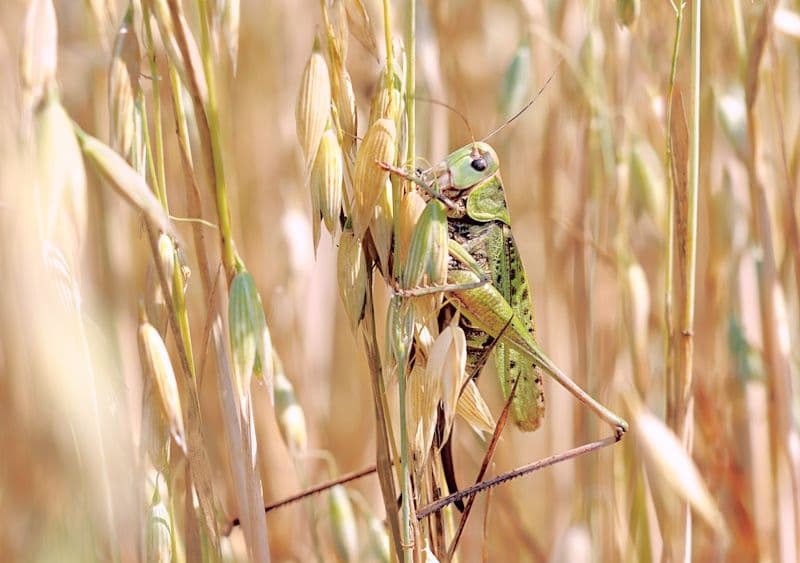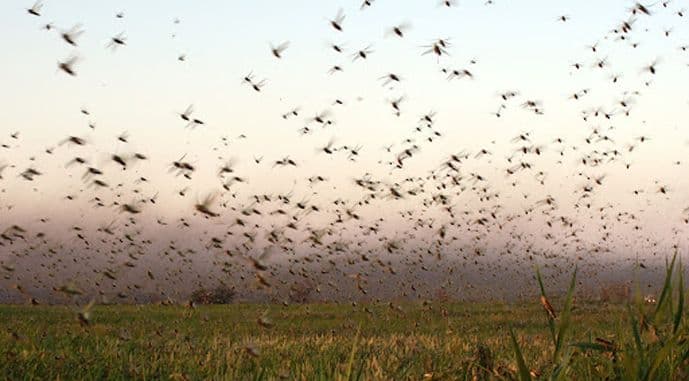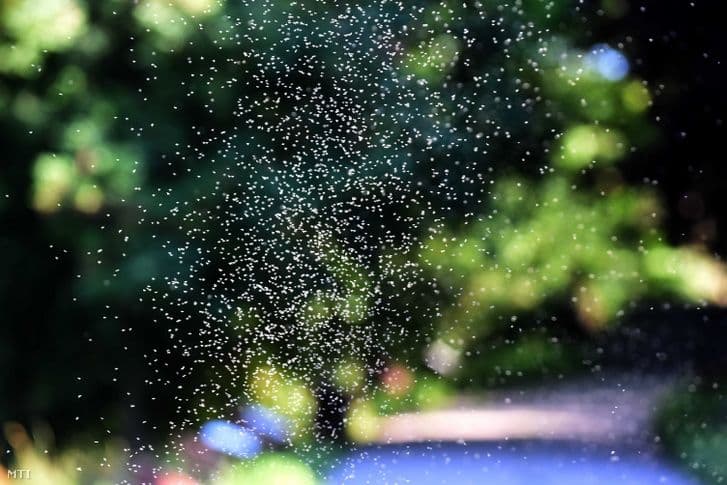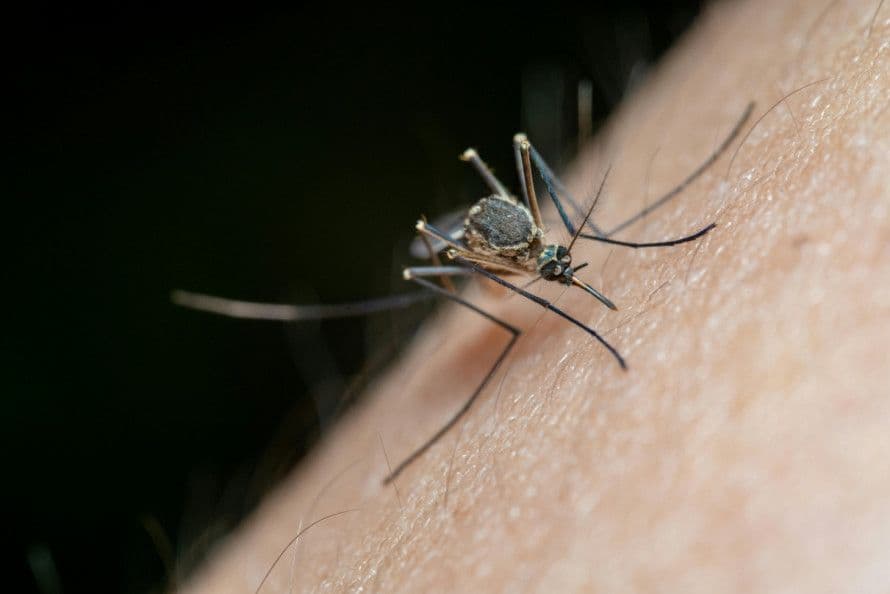Apocalypse or Awakening? Ukraine's Locust Influx and the Search for Meaning Amidst Conflict
A locust invasion in Zaporizhzhia stirs ancient fears and modern anxieties in wartime Ukraine. Is it a mere pestilence or a profound omen? Explore its symbolic weight.

When the Sky Turns Green: Ukraine's Alarming Locust Influx
In a nation already grappling with the brutal realities of war, a new, unsettling phenomenon has emerged, casting a shadow over the region: a massive influx of locusts. Residents have taken to social media, sharing videos and accounts of the swarms, describing how these voracious insects decimate crops within hours. For those in private households, the sight of their gardens and fields being consumed by this ancient pest is a tangible, immediate disaster. But beyond the agricultural damage, this biological event has stirred a deeper, more primal fear. In a society under siege, where daily life is dictated by the ebb and flow of conflict, natural occurrences often take on amplified significance. The appearance of such a destructive force, reminiscent of biblical plagues, has quickly led to widespread speculation. Is this mere happenstance, a consequence of changing climate or agricultural practices? Or, as many are now whispering, could it be something far more ominous – a profound and unsettling natural omen in a time of profound human suffering? The question hangs heavy in the air, adding another layer of anxiety to an already strained populace.

Whispers from the Past: Locusts as Harbingers in History
Across civilizations and throughout history, the sudden appearance of locust swarms has rarely been viewed as a neutral event. From ancient Egypt to biblical narratives, these insects have been etched into the collective human psyche as symbols of devastation, divine displeasure, and impending doom. Their ability to consume vast swathes of land, leading to famine and despair, naturally lent them a powerful, often terrifying, symbolic weight. It’s a primal fear, deeply embedded in our cultural memory, that resonates particularly strongly in agrarian societies. When , a nation known as the 'breadbasket of Europe,' experiences such a phenomenon, the historical echoes are undeniable. This isn't just an agricultural problem; it taps into a deep well of ancestral anxieties, recalling times when humanity was far more vulnerable to nature's whims. The current situation in Zaporizhzhia, therefore, isn't just about a pest infestation; it’s about the reawakening of ancient apprehensions, the collective memory of natural forces dictating human fate, and the search for meaning in a world turned upside down.
The Seer's Warning: Connecting Nature's Fury to Human Conflict
Amidst the unease, a prominent figure in Ukrainian spiritual traditions, the molphar , has offered a stark interpretation. He unequivocally labels the locust infestation as an "incredibly bad sign," particularly given its occurrence in a region heavily impacted by the war. Hordeyev draws a direct, chilling parallel: "Ukraine, like locusts, is attacked by ." For him, this natural event is a clear message, a "concrete sign from nature" warning of an imminent and significant Russian offensive. He suggests a 90% probability of a renewed attack, especially in the area, urging authorities to heed nature's subtle cues. This interpretation isn't just a pronouncement; it’s a powerful narrative that provides a framework for understanding the seemingly random chaos of war. In a conflict where conventional explanations often fall short, such warnings from traditional seers offer a sense of order, attributing deeper meaning to events and, crucially, validating the anxieties and premonitions many people already feel. It transforms a natural disaster into a potent, symbolic reflection of the human conflict unfolding around them.
Finding Meaning in Chaos: The Human Search for Signs Amidst War
Hordeyev's interpretation, and indeed the public's reception of it, highlights a fundamental human need: the search for meaning in the face of overwhelming chaos. When life is unpredictable and brutal, as it is in a warzone, people instinctively look for patterns, signs, and prophecies to make sense of their reality. The molphar's broader philosophical observation that "all these signs show that we are not going the right way" and are "moving towards an apocalypse" resonates deeply. It's a call for introspection, a suggestion that perhaps the collective has become complacent, "relaxed," believing there's "no need to donate, to worry." This isn't just about predicting the future; it’s about finding a narrative that explains the present and offers a path forward. While the source material itself cautions that such predictions are not scientific and often for entertainment, their psychological impact is undeniable. They provide a lens through which to process trauma, offering a sense of agency or, at the very least, a shared understanding of collective anxieties. In a time of war, even a symbolic interpretation can serve as a vital coping mechanism, allowing people to project their fears and hopes onto external events.
Beyond the Omen: A Call for Resilience and Action
Ultimately, the perceived omen of the locusts, while unsettling, serves a purpose beyond mere fear. If Hordeyev's warning about complacency holds true, then the 'sign' becomes a powerful catalyst for renewed vigilance and collective action. It’s a stark reminder that even amidst the ongoing conflict, there's no room for detachment or apathy. The underlying message, whether from a molphar or the collective unconscious, is a call to awaken from any perceived 'relaxation' and to re-engage with the struggle. The disclaimer accompanying the molphar's words, emphasizing that individuals can become "the creator of events if they have the strength of spirit and inspiration to change their life for the better," is particularly poignant here. It transforms a potentially fatalistic prophecy into an empowering one. The locusts, then, are not just a harbinger of doom, but a potent symbol urging Ukrainians to harness their inner strength, to remain resilient, and to continue contributing to their nation's fight for survival. It's a powerful narrative that reframes a natural disaster into a profound psychological call to arms, reminding everyone that their collective spirit and actions are the true determinants of their future.
Related Articles

The Unintended Consequence: Unmasking the Paradox Behind Ukraine's Locust Surge

The Unintended Consequence: Unmasking the Paradox Behind Ukraine's Locust Surge

Whispers on the Wind: Ukraine's Locust Surge and the Unforeseen Harvest of Conflict

Whispers on the Wind: Ukraine's Locust Surge and the Unforeseen Harvest of Conflict

Siófók's Summer of Shadow: Navigating the Delicate Balance of Protected Pests and Thriving Tourism

Siófók's Summer of Shadow: Navigating the Delicate Balance of Protected Pests and Thriving Tourism

The Silent Scourge: Unmasking Ukraine's Evolving Midge Menace
